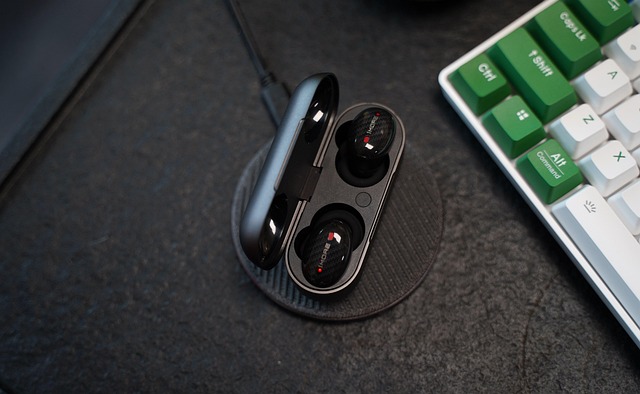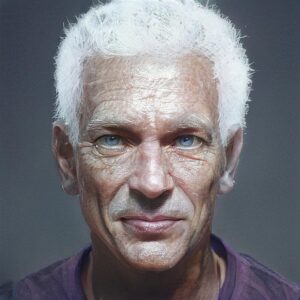Laser skin resurfacing is a non-surgical procedure using concentrated light beams to renew top layers of skin, primarily targeting wrinkle reduction. By creating micro-lesions, it stimulates fibroblasts to produce new collagen and elastin, resulting in smoother, tighter skin. This versatile treatment addresses fine lines, wrinkles, acne scars, and uneven skin tone with minimal downtime compared to surgical alternatives. Top laser choices include CO2, Er:YAG, and Fraxel for significant wrinkle reduction and skin rejuvenation. Ideal candidates are healthy individuals seeking an alternative to surgery, with good skincare habits pre- and post-treatment crucial for optimal results. Potential risks include temporary redness, swelling, discomfort, hyperpigmentation, and hypopigmentation, but proper preparation and care can mitigate these. Post-procedure recovery involves avoiding strenuous activities and direct sun exposure, and makeup application should be delayed until healing is complete. Cost varies based on clinic location, equipment, and treatment extent, with insurance coverage potentially available in certain regions.
“Unveil a youthful glow with Laser Skin Resurfacing, a revolutionary treatment for wrinkle reduction. This comprehensive guide delves into the intricate world of skin rejuvenation, exploring its science, benefits, and various techniques. From understanding the procedure to selecting the right candidates and managing side effects, we provide an in-depth overview. Discover how different laser types target fine lines and texture, offering a non-invasive path to smoother, brighter skin. Explore recovery tips, cost considerations, and access this transformative treatment effectively.”
Understanding Laser Skin Resurfacing: A Comprehensive Overview

Laser skin resurfacing is a revolutionary non-surgical procedure that has gained immense popularity for its ability to transform the appearance of the skin. This advanced technology utilizes concentrated beams of light to gently reshape and renew the top layers of the dermis, offering a wide range of benefits. By stimulating collagen production and eliminating damaged skin cells, laser resurfacing effectively addresses various skin concerns, with a particular focus on wrinkle reduction.
During the procedure, a precise laser is directed onto the target area, creating micro-lesions that trigger the body’s natural healing response. This stimulates fibroblasts to produce new collagen and elastin fibers, resulting in smoother, tighter skin. Laser skin resurfacing is highly versatile, treating conditions such as fine lines, wrinkles, acne scars, and uneven skin tone. It provides a non-invasive alternative to surgical procedures, offering patients a safer, faster recovery option with minimal downtime.
How Does it Work? The Science Behind the Procedure

Laser skin resurfacing, a revolutionary procedure in dermatology, offers a non-invasive way to achieve youthful-looking skin by targeting fine lines and wrinkles. The process involves using a high-precision laser to gently resurface the skin, removing outer layers of damaged or aged skin cells. This stimulates collagen production, the body’s natural protein that provides skin elasticity and structure. As new, healthy skin cells take their place, they smooth out fine lines and wrinkles, revealing a more youthful and radiant complexion.
The science behind laser skin resurfacing lies in its ability to interact with different skin layers. The laser beam penetrates into the dermis, the second layer of skin, where it heats collagen and elastin fibers without affecting the surface epidermis. This controlled damage triggers the body’s natural healing response, leading to the formation of new, healthy collagen. Over time, this process improves skin texture, reduces wrinkles, and enhances overall skin tone, providing a more even and youthful appearance.
Benefits of Laser Skin Resurfacing for Wrinkle Reduction

Laser Skin Resurfacing offers a multitude of benefits for those seeking effective wrinkle reduction, making it a popular choice in cosmetic procedures. The non-invasive nature of this treatment is appealing to many as it promotes healthier skin without surgery. During the process, lasers target specific depths of the skin, encouraging collagen production and stimulating fibroblasts. This results in improved texture and a more youthful appearance by reducing fine lines and wrinkles.
One of the key advantages is its ability to address various skin concerns, including age spots, scars, and hyperpigmentation, alongside wrinkles. The precision of laser technology allows for customized treatments tailored to individual needs. Additionally, laser resurfacing provides long-lasting results, often with minimal downtime, making it a convenient and effective solution for those wanting to regain a youthful complexion.
Different Types of Lasers Used in Skin Resurfacing

In the realm of skin resurfacing, various types of lasers are employed to achieve optimal results in terms of wrinkle reduction and skin rejuvenation. The most commonly used lasers include CO2 lasers, Er:YAG lasers, and Fraxel lasers. Each laser operates on a different principle, catering to specific needs and skin conditions.
CO2 lasers are known for their ability to remove outer layers of skin, stimulating collagen production and improving skin texture. Er:YAG lasers offer a more gentle approach by targeting deeper layers, making them suitable for sensitive skin. Fraxel lasers stand out with their fractional treatment, where tiny laser beams create micro-lesions that trigger the body’s natural healing process, resulting in smoother, younger-looking skin without prolonged downtime.
Candidate Selection: Who is a Good Fit for This Treatment?

Laser skin resurfacing is a popular choice for those seeking to rejuvenate their complexion and reduce the appearance of wrinkles. Ideal candidates are individuals with moderate to severe facial wrinkles, including fine lines and deep furrows, who are looking for a non-invasive alternative to surgical facelifts. This treatment is not suitable for everyone; it’s essential to have realistic expectations and a healthy skin regimen before proceeding.
Good candidates typically have good overall health, with no active skin conditions or infections. It’s crucial to discuss any medications or supplements you’re taking as some substances may interfere with the laser procedure. Additionally, maintaining a consistent skincare routine and avoiding excessive sun exposure before and after treatment can significantly contribute to optimal results for wrinkle reduction.
The Procedure Step-by-Step: What to Expect During and After

Procedure Step-by-Step: What to Expect During and After
During laser skin resurfacing, a thin layer of the top skin is removed using a high-precision laser. This ablative process encourages the body to produce new, healthy skin cells, leading to significant improvements in texture and appearance. The treatment area is typically numbed with a topical anesthetic beforehand. Following the procedure, patients may experience temporary redness, swelling, and sensitivity.
Post-procedure care involves keeping the treated area clean and moisturized, using recommended products to support healing. It’s crucial to protect the skin from sun exposure by wearing sunscreen daily for several weeks after treatment. Results can take several days to appear, with ongoing improvement over a few weeks, focusing on reduced wrinkles and an enhanced skin texture. This non-invasive approach offers long-lasting benefits, making it a popular choice for those seeking effective wrinkle reduction without surgery.
Potential Risks and Side Effects: Addressing Common Concerns

Laser skin resurfacing, while offering significant benefits for wrinkle reduction and skin rejuvenation, does come with potential risks and side effects that should be addressed. Common concerns include temporary redness, swelling, and discomfort during and after the procedure. These side effects are usually mild to moderate and subside within a few days.
Another risk to consider is hyperpigmentation or hypopigmentation, where areas of the skin may darken or lighten unevenly. This can be more pronounced in individuals with darker skin tones. Proper pre-treatment preparation and choosing an experienced provider can mitigate these risks. Additionally, some patients may experience infection, but this is rare when proper post-procedure care instructions are followed.
Recovery Time and Post-Treatment Care Instructions

After Laser Skin Resurfacing, recovery typically takes a few days. Patients may experience some redness, swelling, and mild discomfort in the treated areas, which usually subside within 24 to 48 hours. It’s important to follow post-treatment care instructions carefully during this period. This includes keeping the treated skin clean and moist, avoiding direct sun exposure without protection, and using recommended topical medications or creams.
To aid in wrinkle reduction and promote healing, avoid strenuous activities, saunas, or hot tubs for at least a week after the procedure. Additionally, patients should refrain from using makeup until their practitioner gives the go-ahead, as this can irritate the skin. Regular follow-up appointments are crucial to monitor progress and ensure optimal results while minimizing risks and potential complications.
Cost and Availability: Accessing Laser Skin Resurfacing Services

Laser skin resurfacing, a groundbreaking procedure for achieving smoother, younger-looking skin, has become increasingly accessible to a wider range of individuals. However, as with any aesthetic treatment, cost plays a significant factor. The expense of laser skin resurfacing can vary greatly depending on several variables, including the clinic’s location, the technology used, and the extent of the procedure required to address specific concerns like wrinkle reduction.
Fortunately, many reputable dermatological clinics offer flexible payment plans and promotional packages to make this advanced skincare treatment more affordable. Moreover, with the growing demand for non-invasive cosmetic procedures, insurance companies in certain regions may cover a portion of the costs associated with laser skin resurfacing for medical reasons, such as improving texture and reducing moderate to severe wrinkles.
